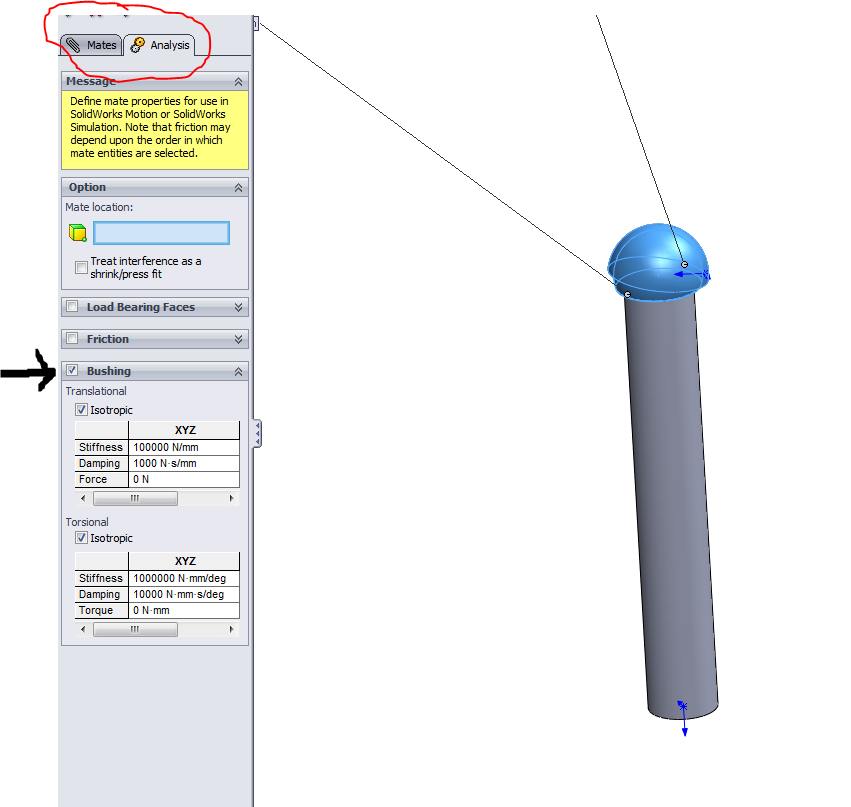Realistic load transfer in SOLIDWORKS motion simulation
When setting up a motion study in SolidWorks, the interactions between the different components of your part will be dictated by how the mates are set up. This is because the mates will tie up respective degrees of freedom relative to the two components being mated. This means that transfer of the loading from one component to another will depend on the mate. In other words, how one part moves another based on the load it is under is controlled by how those two components are mated.
SolidWorks mates do a great job in defining the degrees of freedom. Any combination of motions is easily achievable by chosing the appropriate mates. Load transfer, however, involves more than just direction and magnitude (freedom) of the motion. Load transfer is also concerned with the stiffnesses of the part under loading. This is because materials have the ability to deform both plastically and elastically. Simply creating the mate does not account for this flexibility.
To deal with this inherent rigidity, SOLIDWORKS has a utility that allows us to define a bushing in the mate. Right inside the mate command, there is an analysis tab that helps us set up such parameters like the flexibility of the mate.
This means that our study will reflect the real world that much more accurately as we are able to account for the deflection that occurs in the component before the load is transfered to the next component.
Brian Adika, CSWP
Applications Engineer, CATI

 Blog
Blog 